Side-hustles, self-doubt and $50k on travel costs alone: What life is REALLY like for a tennis player trying to qualify for the US Open
A scream rings out around Court 4 at the Billie Jean King National Tennis Center. A forehand volley has blown away down the line, and for Gabriela Knutson, another match has gone by.
Down a set and a break and now 5-2 in the second, the world number 185 needs a miracle. Knutson is playing at the US Open for the first time, but her Grand Slam hopes are already hanging by a thread – almost a week before fans stream through the gates at Flushing Meadows.
The 27-year-old is one of 128 women vying for 16 spots in the main draw – and a chance to win a share of the “largest prize pool in tennis history”. This year’s singles champions will receive $3.6 million; a first-round defeat still nets players $100,000.
But first, Knutson must make it through three qualifying rounds. Even to make it to the first round, she had to overcome her self-doubt and dig deep into her own pockets. The California-born, Czech-raised newcomer has earned $122,758 so far this year. Nearly half of that has already disappeared in taxes and in the pursuit of her self-funded dream.
Her route to Flushing Meadows included a stopover in North Carolina for a pre-US Open tournament. That meant a flight from Prague to Cary, and then a flight to New York. That meant she had to pay for hotels in both North Carolina and the Big Apple. Plus food, plus baggage fees — for herself and her younger brother/travel coach Dominik. That came to about $5,000 alone.
Gabriela Knutson spoke to DailyMail.com about her life as a professional tennis player on the lower circuits
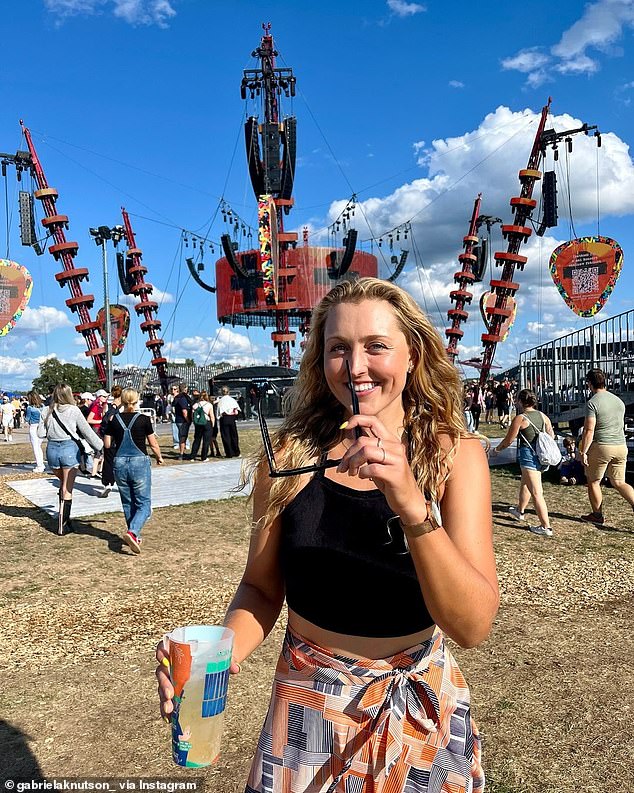
All this happened as she prepared for her fourth ever Grand Slam qualifying event.
All to reach one of the biggest stages in tennis. This is the reality of life in the shadows of Arthur Ashe Stadium. Knutson has spent the past two seasons on the ITF tour, which is so expensive that she took a job with a tennis company in Texas, where she works on social media.
Knutson is exploring the possibility of doing a six-tournament swing in the United States between mid-September and mid-November. The only problem? Paying for hotels, flights, rental cars, food, treatments, shoes and racquet stringing will cost about $25,600.
If she decided to hire a full-time coach, the cost of that swing would rise to $50,000. That wouldn’t be so daunting if Knutson knew the investment would pay off.
Unfortunately, there are no guarantees. On the ITF tour, prize money ranges from a few hundred dollars – for losing in the early rounds – to several thousand if she reaches the final.
Knutson has tried to shed light on the realities of life on tour via social media, but she still feels there is an assumption that professional tennis players are automatically rolling in money.
“It’s an absolute farce that we’re at Grand Slam level and I still can’t afford to have a coach and a place to live. I can have one now, but I can’t have both,” she explained to DailyMail.com. When she’s back home in Prague, Knutson lives with her uncle.
“I wouldn’t complain if it was known. That’s why I just wanted to create awareness with the Instagrams, especially, and the TikToks. I didn’t want to complain at all. We’re all happy to be here.
‘People just think we live incredible lives and make so much money. And so I just wanted the story to be, “No, we’re really struggling financially.”‘
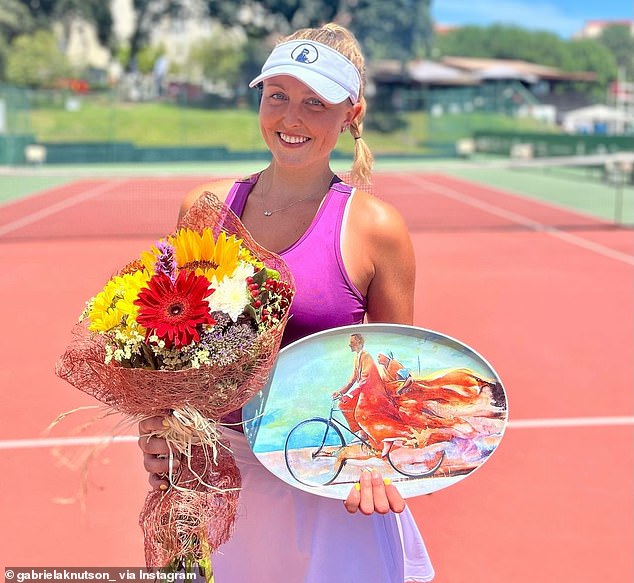
Knutson is considering a six-tournament swing in the United States, costing $26,000
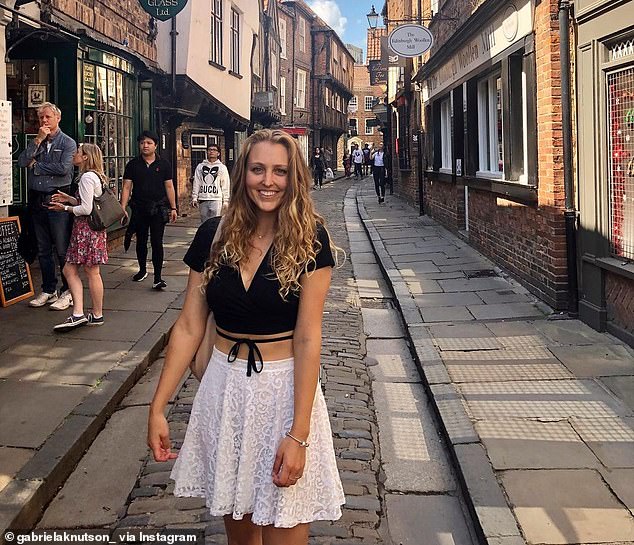
To make ends meet, Knutson took a job in social media
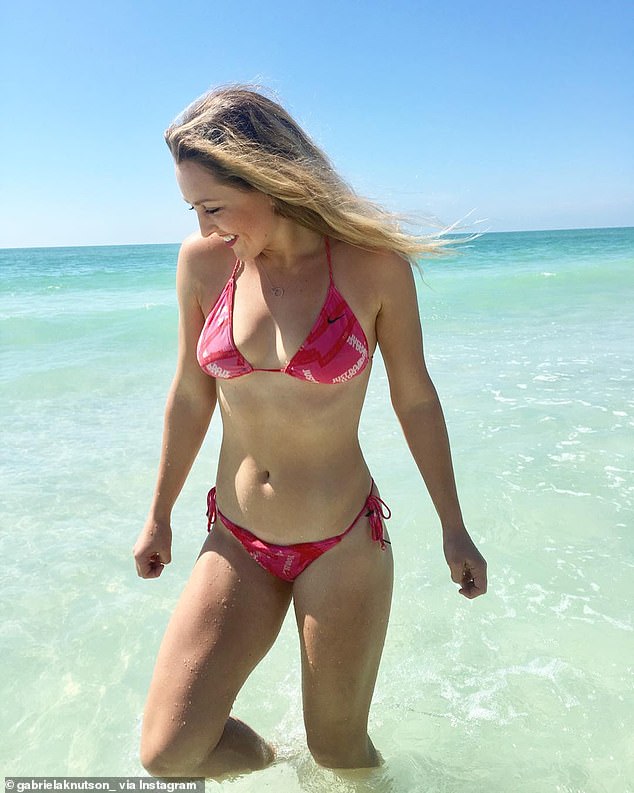
Knutson has used her platform to raise awareness for the issues players face on the circuit
It’s not all about the money, though. There’s also the constant loneliness of life on the road. Knutson wishes the ITF would have more tournaments in Europe. Not just to keep her costs down. But so she can spend more time with family and friends and build relationships.
“I can never visit anyone because I have no idea of my schedule, ever. I don’t know what I’m going to do next week. It’s just crazy,” she says.
“You can’t plan with a boyfriend, you can’t plan with a friend, you can’t plan anything. It’s really wild that people who are close to me actually understand that, because they’re like, “What do you mean you don’t have weekends off?” I’m like, “No, I have weekends off. I just never know when they’re going to be.”
‘Any relationship is impossible, even with other people on tour, because they tour a lot too. So you can’t really have that. It’s only an option if you find a good base and you have a relationship and friends there… because you’re on the road about 75 percent, and the rest you’re training. And then you have about two weeks, maybe four, spread out over the year that you have off.’
It doesn’t help that Knutson took an unconventional route to the pro tour. She first picked up a racket at age 2 and moved to the Czech Republic at 12, where her training intensified.
It wasn’t until she got to college that she felt able to truly prioritize something other than tennis. Instead of going to one of the most elite tennis schools in the United States, she forged a path for herself at Syracuse University, where she was ranked No. 4 in the country her senior year.
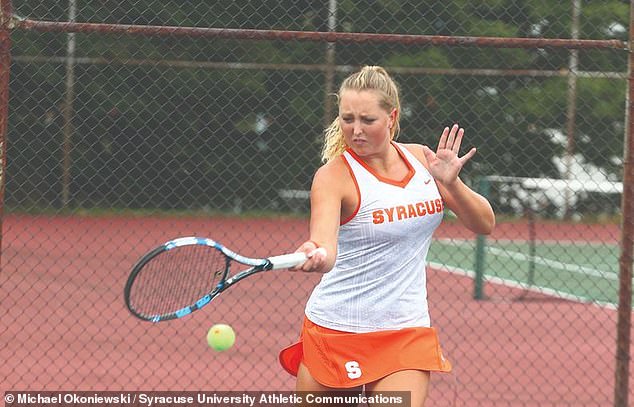
Knutson said she attended Syracuse University with no intention of going pro
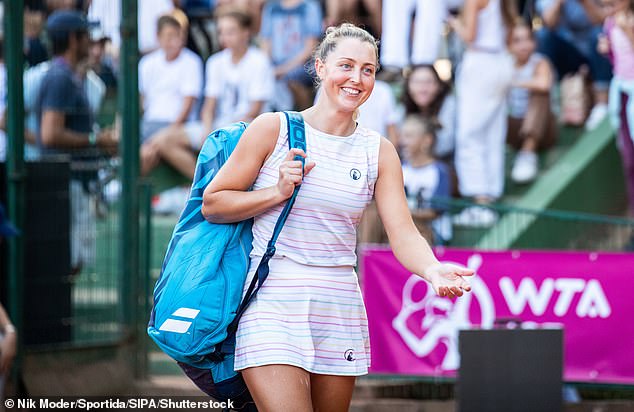
But after her academic career, she decided to give the professional circuit a try at the age of 26
“I went to Syracuse for college, and that was 100 percent the path I took. I just had no idea that I was going to go pro after that. Every time I was asked, I said, ‘I don’t want to.’ I don’t want to be on tour by myself. I don’t want to have no money.
“I also didn’t really think I was good enough, which was stupid. I think at that point I knew I was (good enough), but I really didn’t want to do it.”
After graduating with a degree in journalism, Knutson went to Durham University in England, where she studied for a master’s degree in marketing, then another in renewable energy, all while playing tennis and then coaching at school during the pandemic.
Knutson subsequently applied for and was awarded a Fulbright grant, which allowed her to study in Germany before publishing a book on wind turbines in the US.
At the same time, however, she trained at the University of Nottingham and played in two tournaments – in both tournaments she reached the semi-finals. Suddenly, she felt the urge to play again. So at the age of 26, she turned pro and refused the scholarship.
‘I emailed people and they said, “Why would you do this? Aren’t you a little old to be turning pro in a sport?” But then I emailed them all when I made it to the Australian Open and said, “Look, I made it. It was worth it.”‘
This year’s US Open was the fourth Grand Slam qualifying event of Knutson’s career – all four this year. A heartbreaking third-set defeat in Australia was followed by a first-round exit at Roland Garros and a second-round defeat at Wimbledon to eventual quarterfinalist Lulu Sun.
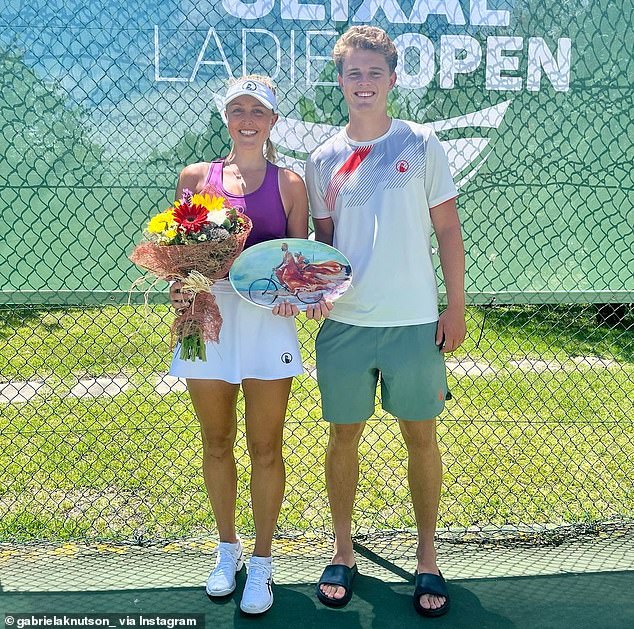
Knutson with her brother Dominik after winning an ITF tournament in Portugal this year
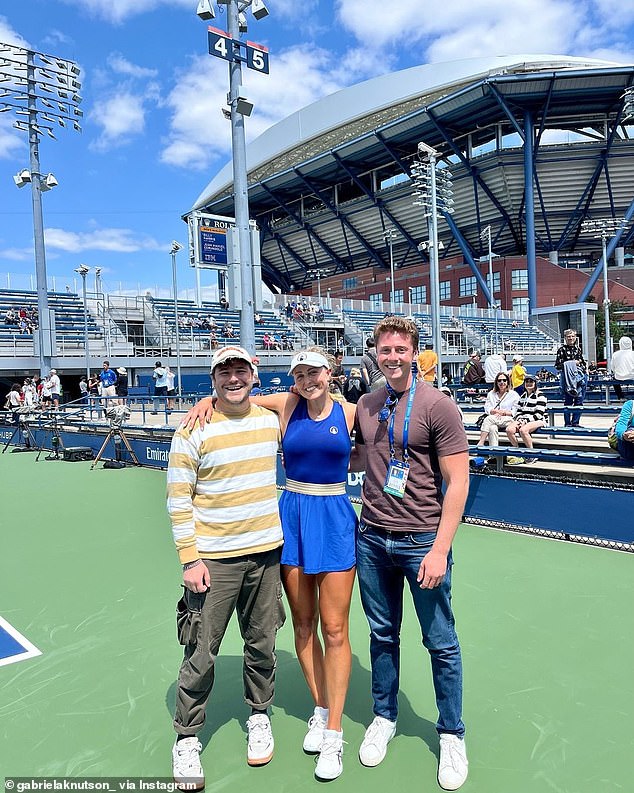
Knutson and two of her friends after her qualifying match at the US Open on August 20
At Flushing Meadows, Knutson faced ninth-seeded Eva Lys of Germany, a 22-year-old who is more than 70 spots higher on the WTA rankings.
A few dozen fans watched as she lost the first set 6-2, before fighting back to send the second set to a tiebreak. Unfortunately, the world number 185 was eventually defeated 7-4.
“I was very nervous,” she admitted. “But I’m proud of myself in the second set, how I really fought back… I’m very happy with how I handled it, even with the loss, how I kept fighting, how my attitude was.”
Knutson’s US Open adventure ended Tuesday morning – two days before the world’s best players were told their first-round draws. She’ll be back next year, hoping to take at least three steps further on her journey to the top.
“I haven’t played for seven years. It’s a long time not to work on technique to get fit in a tennis way. I’ve made a lot of progress in my game in the last two years. I’ve had to learn a lot of things to get where I am now, and especially at an age where I wasn’t exactly young,” she says.
‘I forget that sometimes, when I’m at tournaments and I’m surrounded by all these good people, and then I start comparing myself to them, even though no one has done what I’ve done.’
